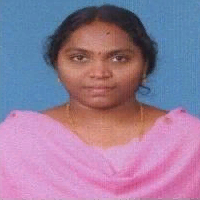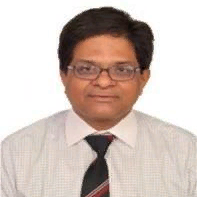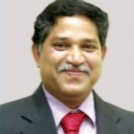International Journal of Image, Graphics and Signal Processing (IJIGSP)
IJIGSP Vol. 10, No. 2, 8 Feb. 2018
Cover page and Table of Contents: PDF (size: 844KB)
Classification of Textures based on Noise Resistant Fundamental Units of Complete Texton Matrix
Full Text (PDF, 844KB), PP.43-51
Views: 0 Downloads: 0
Author(s)
Index Terms
Local binary pattern, textons, uniform local binary pattern, local features
Abstract
One of the popular descriptor for texture classification is the local binary pattern (LBP). LBP and its variants derives local texture features effectively. This paper integrates the significant local features derived from uniform LBPs(ULBP) and threshold based conversion factor non-uniform (NULBP) with complete textons. This integrated approach represents the complete local structural features of the image. The ULBPs are proposed to overcome the wide histograms of LBP. The ULBP contains fundamental aspects of local features. The LBP is more prone to noise and this may transform ULBP into NULBP and this degrades the overall classification rate. To addresses this, this paper initially transforms back, the ULBPs that are converted in to NULBPs due to noise using a threshold based conversion factor and derives noise resistant fundamental texture (NRFT) image. In the literature texton co-occurrence matrix(TCM) and multi texton histogram (MTH) are derived on a 2x2 window. The main disadvantage of the above texton groups is they fail in representing complete textons. In this paper we have integrated our earlier approach “complete texton matrix (CTM)” [16] on NRFT images. This paper computes the gray level co-occurrence matrix (GLCM) features on the proposed NRFCTM (noise resistant fundamental complete texton matrix) and the features are given to machine learning classifiers for a precise classification. The proposed method is tested on the popular databases of texture classification and classification results are compared with existing methods.
Cite This Paper
Y.Sowjanya Kumari, V. Vijaya Kumar, Ch. Satyanarayana," Classification of Textures based on Noise Resistant Fundamental Units of Complete Texton Matrix", International Journal of Image, Graphics and Signal Processing(IJIGSP), Vol.10, No.2, pp. 43-51, 2018. DOI: 10.5815/ijigsp.2018.02.05
Reference
[1]Manjunath, B.S., Ma, W.Y., 1996. Texture features for browsing and retrieval of image data. IEEE Trans. on Pattern Anal. and Machine Intelligence 18, 837–6842.
[2]Ojala, T., Pietikainen, M., Maenpaa, T., 2002. Multiresolution gray-scale and rotation invariant texture classification with local binary patterns. IEEE Trans. on Pattern Anal. and Machine Intelligence 24, 971–987.
[3]Han, J., Ma, K.K., 2007. Rotation-invariant and scale-invariant gabor features for texture image retrieval. Image and Vision Computing 25, 1474–1481.
[4]Liao, S., Law, M., Chung, A., 2009. Dominant local binary patterns for texture classification. IEEE Trans. Image Process. 18, 1107–1118.
[5]Ren, J., Jiang, X., Yuan, J., 2013. Noise-resistant local binary pattern with an embedded error-correction mechanism. IEEE Trans. Image Process. 22, 4049–4060.
[6]Tan, X., Triggs, B., 2010. Enhanced local texture feature sets for face recognition under difficult lighting conditions. IEEE Trans. Image Process. 19, 1635–1650
[7]Guo, Z., Zhang, L., Zhang, D., 2010. A completed modeling of local binary pattern operator for texture classification. IEEE Trans. Image Process. 19, 1657–1663.
[8]Khellah, F., 2011. Texture classification using dominant neighborhood structure. IEEE Trans. Image Process. 20, 3270–3279.
[9]H.Y.T.Ngan, G.K.H.P and, N.H.C.Yung, Automated fabric defect detection—a review, Image Vis. Comput. 29 (2011)442–458.
[10]C. Zheng,D.-W.Sun,L.Zheng, Recent applications of image texture for eva- luation of food qualities—a review, Trends Food Sci.Technol.17 (2006) 113–128.
[11]E. Cernadas, P.Carrión, P.G.Rodríguez, E.Muriel, T.Antequera, Analyzing magnetic resonance images of Iberian pork loin to predict its sensorial characteristics, Comput. Vis. Image Underst.98 (2005)345–361.
[12]V.Vijaya Kumar, A. Srinivasa Rao, YK Sundara Krishna, “Dual Transition Uniform LBP Matrix for Efficient Image Retrieval”, I.J. Image, Graphics and Signal Processing (IJIGSP), Vol. 8, 2015, pp: 50-57.
[13]A Obulesu, JS Kiran, V. Vijay Kumar, “Facial image retrieval based on local and regional features” , IEEE- 2015 International Conference on Applied and Theoretical Computing and Communication Technology (iCATccT), 29-31 Oct. 2015, pp:841 – 846.
[14]Guang-Hai Liu a, LeiZhang b, Ying-KunHou d, Zuo-YongLi c, Jing-YuYang, Image retrieval based on multi-texton histogram, Pattern Recognition, 43(2010),2380–2389
[15]B. Sujatha, V. VijayaKumar, M. Chandra Mohan, “Rotationally invariant texture classification using LRTM based on fuzzy approach”, International Journal of Computer Applications (IJCA), Vol.33, Iss.4, 2011, pp.1-5, ISSN: 0975 – 8887.
[16]Y.Sowjanya Kumari, V. Vijaya Kumar, Ch. Satyanarayana, Texture Classification Using Complete Texton Matrix, I.J. Image, Graphics and Signal Processing, 2017, 10, 60-68
[17]G. Martens, C. Poppe, P. Lambert, R. Van De Walle, 2010, “Noise- and compression-robust biological features for texture classification”, Visual Comput. pp: 1–8.
[18]Neeraj Sharma, Amit K. Ray, Shiru Sharma, K. K. Shukla, Satyajit Pradhan, and Lalit M. Aggarwal2, Segmentation and classification of medical images using texture-primitive features: Application of BAM-type artificial neural network, J Med Phys. 2008 Jul-Sep; 33(3): 119–126.
[19]V. VijayaKumar,N. GnaneswaraRao, A.L.Narsimha Rao“RTL: Reduced texture spectrum with lag value based image retrieval for medical images” , International Journal of Future Generation Communication And Networking (IJFGCN), Vol. 2, Iss. 4, 2009, pp.39-48, ISSN: 2233-7857.
[20]Saima Anwar Lashari* , Rosziati Ibrahim, A Framework for Medical Images Classification Using Soft Set, The 4th International Conference on Electrical Engineering and Informatics (ICEEI 2013), Procedia Technology 11 ( 2013 ) 548 – 556
[21]V. Vijaya Kumar, K. Srinivasa Reddy, V. Venkata Krishna , “Face Recognition Using Prominent LBP Model”, International Journal of Applied Engineering Research , Vol. 10, Iss. 2, 2015, pp. 4373-4384, ISSN: 0973-4562
[22]K. Srinivasa Reddy, V.Vijaya Kumar, B.Eshwarareddy, “Face Recognition based on Texture Features using Local Ternary Patterns”, I.J. Image, Graphics and Signal Processing (IJIGSP), Vol.10, 2015, pp: 37-46, ISSN: 2074-9082.
[23]Mohd.Abdul Muqeet, Enhancing Face Recognition Performance using Triplet Half Band Wavelet Filter Bank, I.J. Image, Graphics and Signal Processing, 2016, 12, 62-70
[24]Pullela R Kumar, V. Vijaya Kumar, Rampay.Venkatarao, “Age classification based on integrated approach”. International Journal Of Image, Graphics And Signal Processing (IJIGSP), Vol. 6, Iss.7, 2014, pp. 50-57, ISSN: 2074-9082.
[25]Mohammad Saber Iraji , Mohammad Bagher Iraji , Alireza Iraji, Razieh Iraji , Age Estimation Based on CLM, Tree Mixture With Adaptive Neuro Fuzzy, Fuzzy Svm, I.J. Image, Graphics and Signal Processing, 2014, 3, 51-57
[26]Olufade F. W. Onifade, Damilola J. Akinyemi, GWAgeER – A GroupWise Age Ranking Framework for Human Age Estimation, I.J. Image, Graphics and Signal Processing, 2015, 5, 1-12
[27]M. Petrou,P.García-Sevilla, Image Processing: Dealing With Texture, Wiley, England, 2006.
[28]R. M. Haralick, K. Shanmugam, I. Dinstein, Textural features for image classification, IEEE Trans. Syst., Man, and Cyber. 3 (1973) 610–621.
[29]G. M. Haley, B. S. Manjunath, Rotation-invariant texture classification using a complete space-frequency model, IEEE Trans. Image Processing, 8, (1999) 255–269.
[30]H. Deng,D. A.Clausi, Gaussian MRF rotation-invariant features for image classification, IEEE Trans. Pattern Anal. Mach. Intell. 26(7) (2004)951–955.
[31]P.Campisi, A.Neri, G.Panci, G.Scarano, Robust rotation-texture classification using a model based approach, IEEE Trans. Image Process.13(6)(2004) 782–791.
[32]M. Varma, A. Zisserman, A statistical approach to texture classification from single images, Int. J. Comput. Vis. 62 (1–2) (2005) 61–81.
[33]M. Varma, A. Zisserman, A statistical approach to material classification using image patches, IEEE Trans. Pattern Anal. Mach. Intell. 31 (11) (2009) 2032–2047.
[34]J.Z.H. Zhao,J.Liang, Continuous rotation invariant local descriptors for texton Dictionary based texture classification, Comput. Vis. Image Underst. 117 (2013) 56–75.
[35]S. Alvarez,M.Vanrell, Texton theory revisited: abag-of-words approach to combine texton,PatternRecognit.45(2012)4312–4325.
[36]Y.Huang,Z.Wu,L.Wang,T.Tan, Feature coding in image classification: acomprehensive study, IEEE Trans.Pattern Anal. Mach. Intell.36(3)(2014)493–506.
[37]T. Leung, J. Malik, Representing and recognizing the visual appearance of materials using three-dimensional textons, Int. J. Comput. Vis. 43 (1) (2001) 29–44.
[38]J. Zhang, M. Marszalek, S. Lazebnik, C. Schmid, Local features and kernels for classification of texture and object categories: a comprehensive study, Int. J. Comput. Vis. 73 (2) (2007) 213–238.
[39]S. Lazebnik, C. Schmid, J. Ponce, A sparse texture representation using local affine regions, IEEE Trans. Pattern Anal. Mach. Intell. 27 (8) (2005) 1265–1278.
[40]J. Xie, L. Zhang, J. You, D. Zhang, Texture classification via patch-based sparse texton learning, IEEE International Conference on Image Processing (ICIP), 2010, pp. 2737–2740.
[41]T. Ojala, M. Pietikäinen, D. Harwood, A comparative study of texture measures with classification based on feature distributions, Pattern Recognit. 29 (1) (1996) 51–59.
[42]Julesz B , Textons, the elements of texture perception, and their interactions. Nature 290, 1981, 91-97.
[43]Guang-Hai Liu, Jing-Yu Yang, Image retrieval based on the texton co-occurrence matrix, Pattern Recognition 41 (2008) 3521 – 3527.
[44]M. Inen, M. Pietikäinen, A. Hadid, G. Zhao, and T. Ahonen, “Computer Vision Using Local Binary Patterns”, vol. 40. New York, NY, USA: Springer- Verlag, 2011
[45]G. Zhao, M. Pietikaeinen, “Dynamic texture recognition using local binary patterns with an application to facial expressions”, IEEE Transactions on Pattern Analysis and Machine Intelligence, Vol. 29, No. 6, 2007
[46]K. Srinivasa Reddy, V.Vijaya Kumar, B.Eshwarareddy, “Face Recognition based on Texture Features using Local Ternary Patterns”, I.J. Image, Graphics and Signal Processing (IJIGSP), Vol.10, 2015, pp: 37-46, ISSN: 2074-9082.
[47]K.Srinivasa Reddy, V. Venkata Krishna, V.Vijaya Kumar, “A Method for Facial Recognition Based On Local Features“, International Journal of Mathematics and Computation, Vol. 27, Iss. 3, 2016, pp: 98-109, ISSN 0974--570X
[48]M. Srinivasa rao, V.Vijaya Kumar, MHM Krishna Prasad, texture classification based on statistical properties of local units, Journal of Theoretical and Applied Information Technology, 30th November 2016. Vol.93. No.2
[49]http://www.ux.uis.no/tranden/brodatz.htmlS.
[50]http://www.outex.oulu.fi/index.php?page=image_databaseS.
[51]Svetlana Lazebnik, CordeliaSchmid and Jean Ponce. A Sparse Texture Representation Using Local Affine regions. IEEE Transactions on Pattern Analysis and Machine Intellignece, Vol.27, No.8, pp:1265-1278, August, 2005.
[52]R. L. Kashyap and A. Khotanzad, 1986, “A model-based method for rotation invariant texture classification,” IEEE Trans. Pattern Anal. Mach. Intell., vol. 8, no. 4, pp. 472–481
[53]Z. Guo, L. Zhang, and D. Zhang, “A completed modeling of local binary pattern operator for texture classification,” IEEE Trans. Image Process., vol. 9, no. 16, pp. 1657–1663, Jun. 2010


